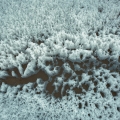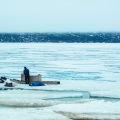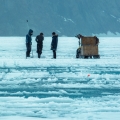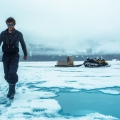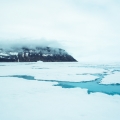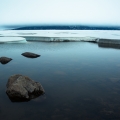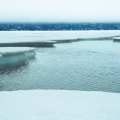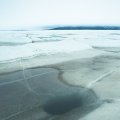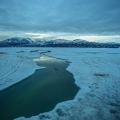Rapid, dramatic changes of surface sea ice

During the Arctic winter, a snow-pack forms over the sea ice. Typically 20-30 cm deep, it is thin relative to the thickness of the ice below. However, this snow layer plays a fundamental role in different domains. Snow is composed of small ice crystals surrounded by air. This very simple structure leads to two important physical properties:
- Snow is a very good thermal insulator. It slows down the transfer of heat from the ice the cold atmosphere in winter which decrease the rate of basal growth of the sea ice.
- Light entering the snow-pack is reflected by individual ice crystals. Therefore, the snow reflects almost all of the solar energy and only a small fraction of the light is transmitted through the snow-pack. Light under sea ice, one of the limiting factors for marine primary production, is mainly controlled by the amount of snow on the ice surface. At the end of the winter, only a few per thousand, or less, of the incident solar energy (transmittance) reach the upper water column (All measurements were performed by instruments designed and manufactured at LGGE, France).
But, things change dramatically with the onset of spring, permanent daylight and an increase in temperature. The snow is warmed, beginning by the surface. Snow grains become larger due to snow metamorphism, and look like little round balls of 1 mm diameter or more. This structural change decreases the reflectivity of the snow, allowing more and more light to penetrate deep into the snow-pack. Several weeks are required for this metamorphism to affect the entire snow pack and for the temperature to reach 0°C over the full depth. Once this stage is reached however, it takes only few days for the snow to entirely melt.
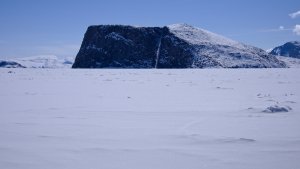
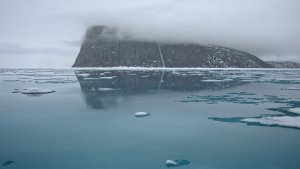
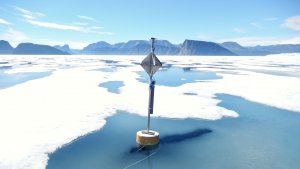
The resulting massive quantity of melt water (fresh water) drains to the water column by gravity, through brine channels, for example, where it eventually refreezes on contact with the colder surrounding ice. This refreezing decreases the global permeability of sea ice. Consequently, because of this unbalance between melting and drainage capacity, a large lake (several centimeters deep) forms over the surface. With time, the excess water drains, leaving well-defined melt ponds. According to recent studies, it seems that the final concentration of the melt ponds depends on several parameters, including: amount of snow, melting rate (directly linked to the weather conditions), salinity of melt water and ice temperature. Furthermore, this concentration is critically important for the radiation balance of sea ice and the biology of the water column. Indeed, our measurements reveal transmittances larger than 25% under melt ponds compared to 5-10% under the ice.

